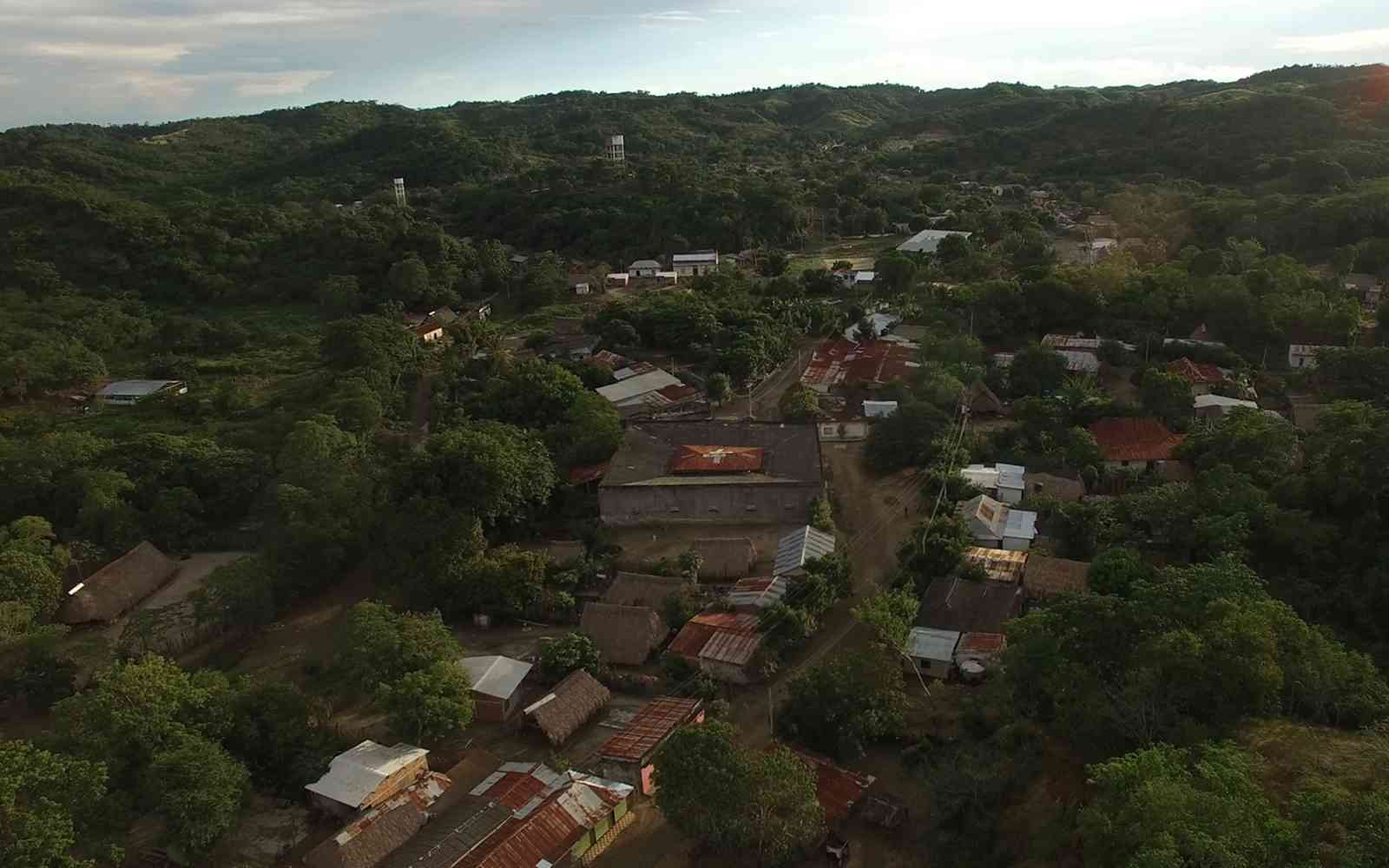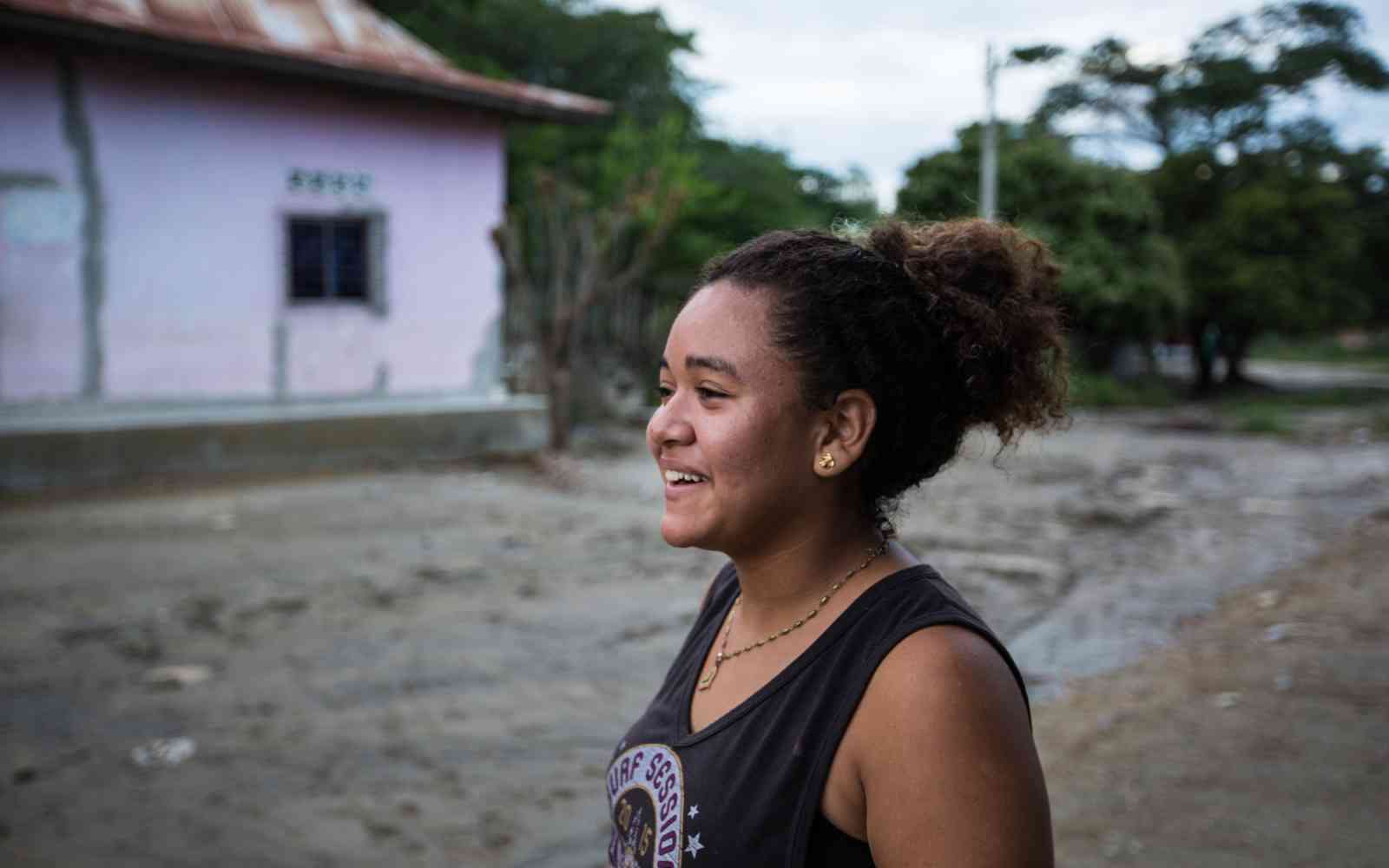The United Nations Office for Project Services (UNOPS)

Access to clean water
In Colombia, 1.6 million people need clean drinking water. Malaria rates are high and basic sanitation infrastructure is in desperate demand. Food security was hit hard in 2016, following extreme drought and then heavy rainfall, which led to flooding and landslides.
La Arenosa is an example of hundreds of communities across Colombia disconnected from urban water supplies. A nationwide project to improve living conditions throughout the country is helping to address these challenges.

Vanesa Contreras’s home is one of many in this community selected to be improved. She lives with her three children in La Arenosa, a settlement of around 400 families on the outskirts of Santo Tomás, in the region of Atlántico – one of the most densely populated parts of Colombia.
La Arenosa is not connected to the water supply network. Vanesa showers her children outside with contaminated water collected from a nearby well. Many residents have no option but to use this for cooking, cleaning and bathing.

Vanesa’s home is approximately nine square meters and serves as kitchen, bathroom, bedroom and study for the family of four.
Basic soups are a standard food for this family. Many residents of La Arenosa are malnourished. Countrywide, 4.4 million people were considered undernourished in 2015. One out of every ten children in Colombia suffers from chronic malnutrition.

“I dream of a house where my children can have a bedroom.”


Vanesa’s extended family also lives in the community. A hundred meters away is her mother’s home, which is also due to benefit from an upgrade. Families with young children are prioritized in this project.
Meet Vanesa and her family | 360°video
For those who can afford it, clean water is delivered by donkey. A bucket of water costs 500 pesos – around 15 cents.
“Each bucket of water doesn’t last very long; I have to buy three of them every day so they last for that day.”



Keeping homes clean and safe for people to live in is a daily challenge in this environment. As well as entering through the roof, rain soaks through the wooden walls of Vanesa’s home.

“I remove the mattresses. My neighbour keeps my stuff so it doesn’t get wet.”


During rainy seasons, La Arenosa floods daily. There is no functioning sewage system across the community. Improving knowledge of the health dangers of exposure to contaminated water is a target of local authorities.
When it rains paths can become rivers in minutes. Children call this crossroads ‘Arenosa Beach.’ Water forms pools – ideal breeding grounds for mosquitoes. Malaria, dengue and chikungunya are common diseases in this community.

Vanesa’s home is expected to be upgraded at the beginning of 2018. Throughout this project, UNOPS engineers and social workers work with families like Vanesa’s to design better living spaces tailored to their needs.
How it works
![]()
- Local governments work with communities to identify families who are most in need of help.
- UNOPS assesses each home, focusing on sustainability factors – for example, families must own their homes, buildings must meet minimum safety standards and be in a stable geographic location.
- Families who meet the criteria are allocated approximately $3,000 each to improve their homes. This sum can be divided between a kitchen, a bathroom, a roof, a floor or an extension in any way.
- A UNOPS engineer works with a social worker and each family to design individual plans to upgrade each property. This is based on the family’s needs, social priorities in the home or community, and the best architectural options.
- Once plans are agreed it takes around four weeks to upgrade each home.












